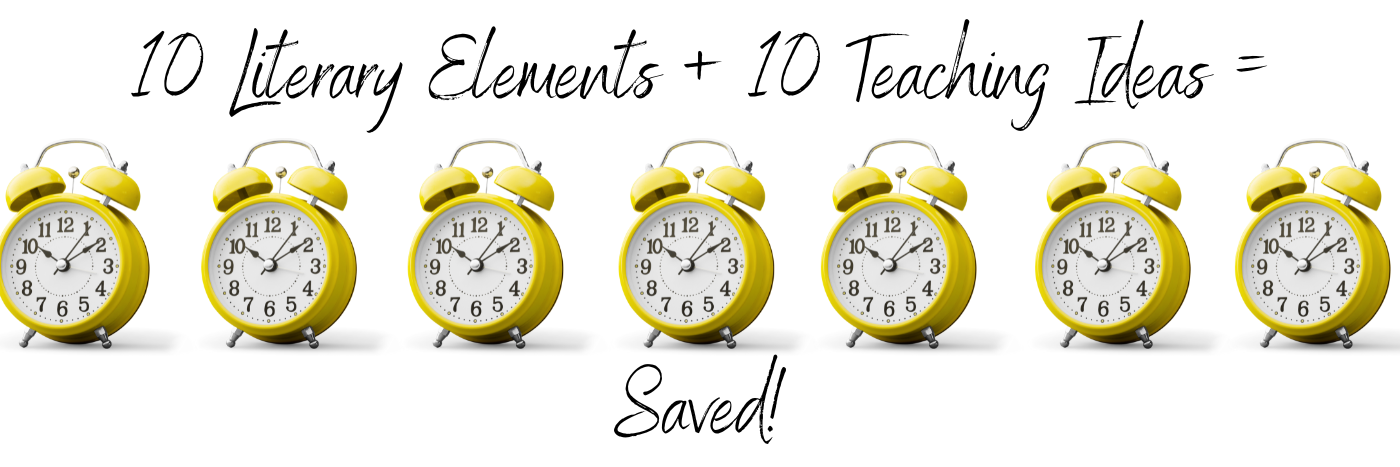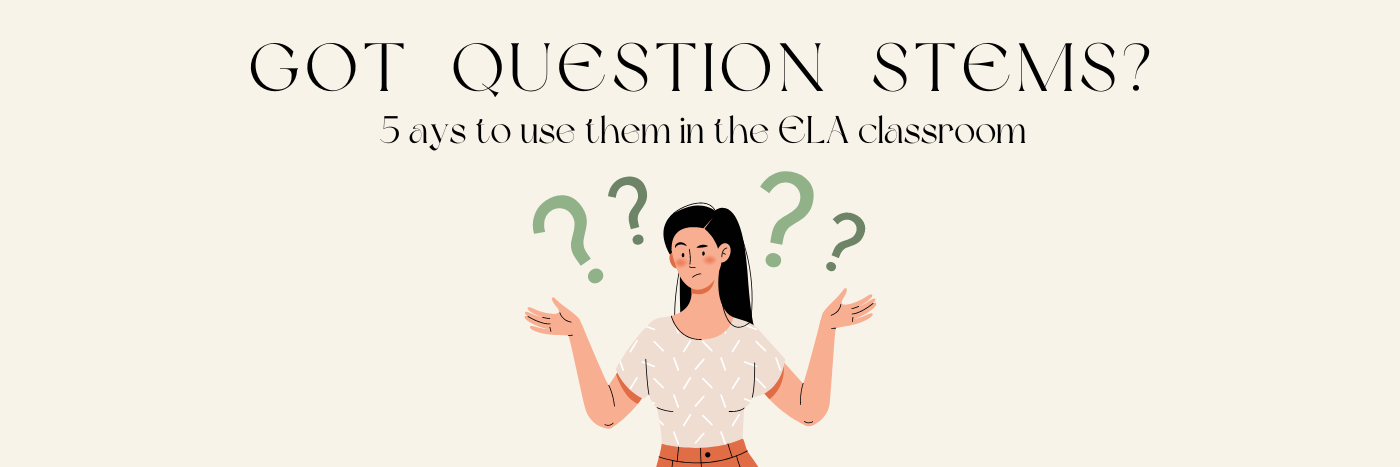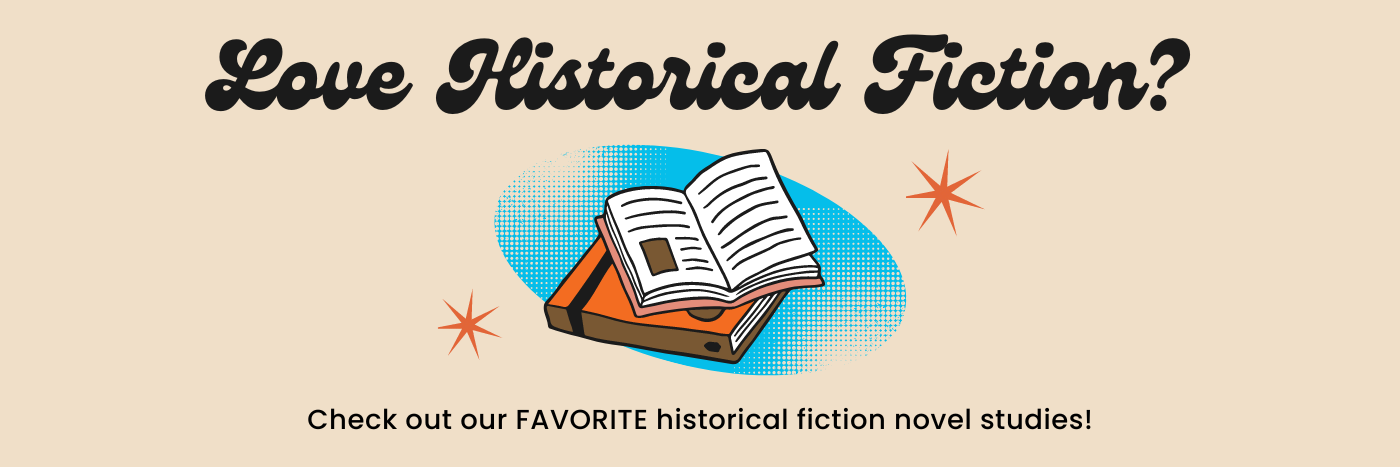
10 Teaching Ideas for 10 Literary Elements
Reading comprehension is a foundational skill students need to be successful in any class, especially English Language Arts. Yet, as students approach upper elementary grades and middle school, they must develop a new skill set when engaging with fiction texts. Beyond identifying story elements, students begin to think critically in different ways. They start to analyze literary devices, synthesize how author’s craft texts, consider the ways symbols and themes connect, examine how setting influences conflict, and even how point of view shapes the reader’s understanding of the text. It’s deep learning, and it requires thoughtful, special teaching. In short, it’s all hard work.
This shift in learning can be dramatic, for students and teachers! However, the teaching and learning that results from that shift can be amazing. It is amazing because entirely new worlds open to students as they explore the unique elements of the books they read. It’s never easy to take them there, but it is possible. To help, here are 10 teaching ideas for 10 literary elements that offer creative, thoughtful activities for students to get you started!
Character | What Would _____ Do?
This activity sparks fantastic discussion! Go beyond identifying character traits and prompt students to think about how those traits influence action. Ask what a character might do when faced with a scenario. For instance, you might ask, “What would Auggie (from Wonder) do if he saw an elderly person drop their groceries on the sidewalk?” Not only does this question ask students to consider his character, but it also encourages them to think about the outside factors that influence who he is.
- For a characterization video lesson + 9 characterization activities click HERE.
Setting | Mood Lamp
The mood lamp activity is a great way for students to analyze the setting of a text. First, have students select a color they think represents the mood the setting creates (a wonderful discussion activity on its own!). Then, in three mood lamp bubbles, encourage students to think of three aspects of the setting that create that mood.
- For a setting video lesson + 9 setting activities click HERE.
Conflict | Advice Column
For this question-response style writing activity, have students really dive deep into a conflict. Students write a letter to an advice columnist from the perspective of the character, explaining the problem they face and how it makes them feel. Then, students respond to the character as the advice columnist and give three pieces of advice on how they might resolve their conflict or what they can learn from the challenge they face.
- For a conflict video lesson + 9 conflict activities click HERE.
Plot | Design a Plot Roller Coaster
Just as roller coasters have ups and downs, twists and turns, so do story plots! After reading a short story or novel, have students design a roller coaster that represents the plot of the narrative. For this creative assignment, students consider character emotions, conflicts, suspense, and more as they design their own roller coaster.
- For a plot video lesson + 9 plot activities click HERE.
Theme | If Only I’d Known
Take theme one step further with this creative exercise. After reading a fiction text, students analyze a theme and lessons learned. Then, have them apply that lesson to a scene from the story. Encourage students to rewrite the scene and show how it would change if only the character knew the lesson they did not learn until the end.
- For a theme video lesson + 9 theme activities click HERE.
Point of View | Vary the View
This activity can be as short or long as you want! Simply ask, how would this story, chapter, or scene be different if ____________ narrated it? Encourage students to think about how literary elements like conflict, tone, setting, and theme would change. If you want to extend the activity, have students rewrite the scene entirely from the different character’s perspective.
- For a point of view video lesson + 9 point of view activities click HERE.
Tone & Mood | Word Choice Tracker
For this math-inspired activity, use a bar graph to track words, phrases, or sentences that create a positive, negative, or neutral tone. Then, prompt students to analyze their graph, diving into their data to identify the tone and using the evidence they collected to prove their analysis.
- For a tone/mood video lesson + 9 tone/mood activities click HERE.
Symbolism | Surrounded by Symbols
Symbolism is an abstract concept and can be challenging for students. Start simple! Create fun sentences and then omit words or phrases and replace them with symbols (or even emojis!). Then, ask students to figure out the meaning of the sentence based on the deeper meaning of the symbols used. While students are analyzing symbols, they’ll actually feel like they’re breaking secret codes!
- For a symbolism video lesson + 9 symbolism activities click HERE.
Flashback | Picture the Parallels
A picture is worth a thousand words, so have your students create a visual to understand flashbacks. Prompt students to draw the image created by the flashback. Then, create an image of the current context. Finally, compare the two and discuss how the flashback shines a light on the present.
- For a flashback video lesson + 9 flashback activities click HERE.
Figurative Language | Write About It
Combine story elements with figurative language! For instance, have students describe the mood of the setting using personification or have them describe a character trait with a simile. Students will be writing their own examples of figurative language to analyze other elements. They will undoubtedly surprise with creative examples and have fun doing it, all the while analyzing the text in a meaningful way.
- For a figurative language video lesson + 9 figurative language activities click HERE.
If you’re interested in more literary elements videos and activities, save with this HUGE BUNDLE! It includes 90 activities and 10 video lessons plus bonus content.
More Blog Posts
It’s time for the annual LIT Lessons Novel Study Giveaway! Year-over-year students grow and change, and those changes are often most pronounced when a new school year begins. It’s a fresh start and a restart. The message of Restart by Gordon Korman captures the spirit of new beginnings, evolving identity, and the universal experience of growing older.
Many ELA question stem resources provide vague sentence starters or surface level prompts to encourage students to engage with a text. Oftentimes, these resources lack true depth and rigor, which means students are not being adequately challenged to critically think about a text.
Middle grades historical fiction novels have come a long way from the books available ‘decades’ ago. In fact, this growing genre is now bursting with fantastic, inspiring, and insightful novels. It comes as no surprise that these books are finding their way into middle school ELA curricula…





